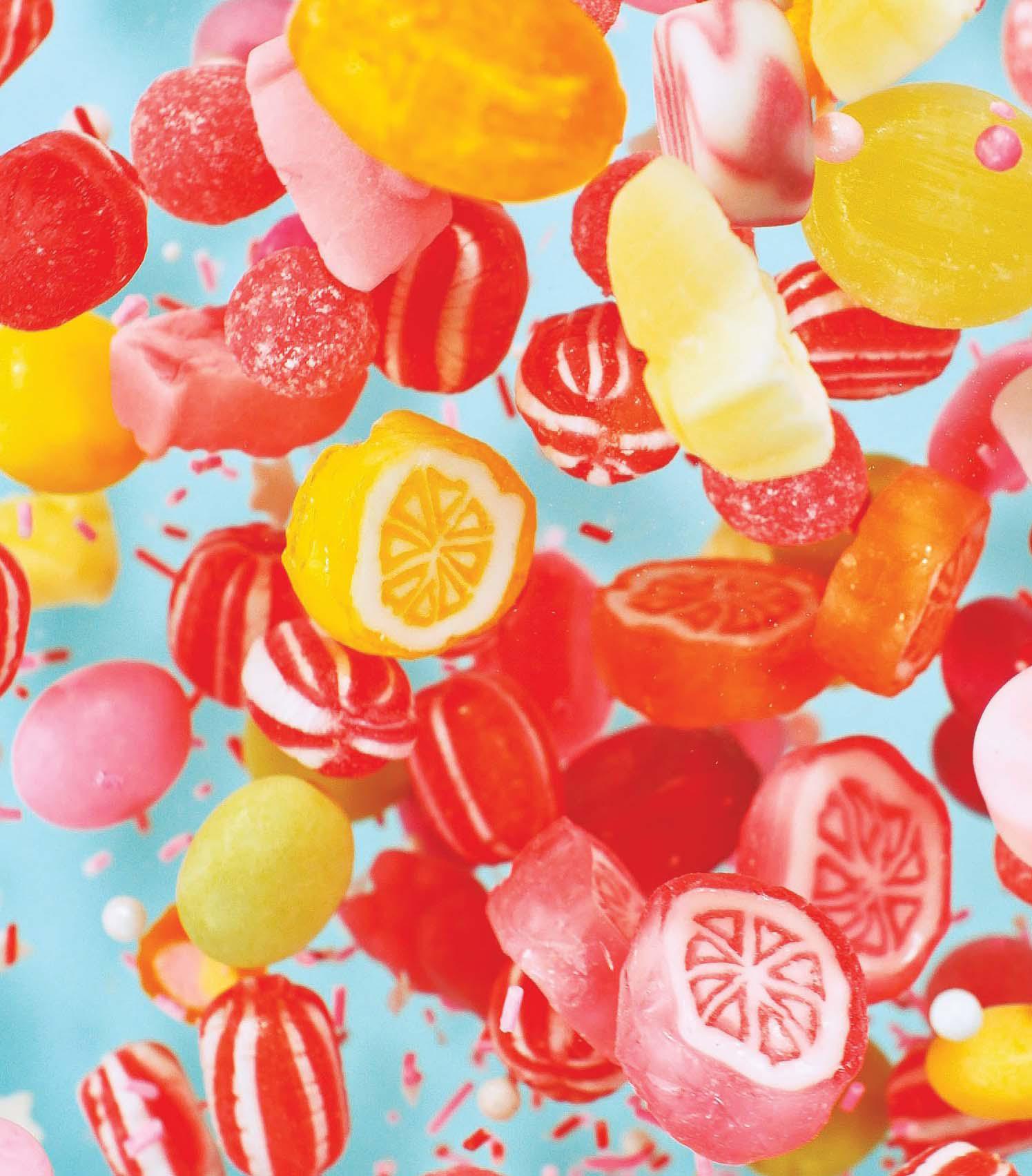Versuchen GOLD - Frei
SUGAR RUSH
The Week Junior Science+Nature UK
|Issue 74
Join the candy craze as Claire Karwowski studies the sugary science of sweets.
-

Imagine you’re walking down the sweet aisle at your local grocery store. You see flying saucers, sour gummies, Maltesers, Mars bars and so much more. Sure, at first glance – and bite – these sweets may taste, look, smell and feel different, but if you boil them all down (literally) they all have the same base ingredient: sugar. It is only when sugar mixes with science that it shapeshifts into your favourite sweets. So how are different candies made? Why do you crave them? Who is hard at work making the world taste so good? Let’s dive into the wild world of sweets to find out.
Candy chemistry
Candy-making is a lesson in chemistry – a type of science that studies how substances change when they react with each other. To make different sweets, candy makers (also known as “food engineers”) combine sugar, water and other ingredients – flavourings and gelatins (substances that form a stiff jelly) – and then bring them to a boil. Boiling the mixture causes a chemical reaction that changes the structure of sugar. Once that happens, the sugar mixture is ready to be cooled. It is the cooling process that determines what form the sugar will take. All candy can be sorted into two categories: crystalline or non-crystalline. Crystalline candies are continuously stirred as they cool, which makes smooth, easy-to chew sweets like fudge. Non-crystalline candies are usually more brittle-like sticks of rock and lollipops. The mixture is boiled at a much higher temperature, which gives it a hard glassy texture.
Sweet school
Diese Geschichte stammt aus der Issue 74-Ausgabe von The Week Junior Science+Nature UK.
Abonnieren Sie Magzter GOLD, um auf Tausende kuratierter Premium-Geschichten und über 9.000 Zeitschriften und Zeitungen zuzugreifen.
Sie sind bereits Abonnent? Anmelden
WEITERE GESCHICHTEN VON The Week Junior Science+Nature UK

The Week Junior Science+Nature UK
Make square bubbles
Build a frame to capture straight-edged bubbles.
1 mins
December 2025

The Week Junior Science+Nature UK
Smart scientists win big
The Nobel Prize rewards some of the world's brightest minds in science - as well as literature, economics and peace for their discoveries.
1 min
December 2025
The Week Junior Science+Nature UK
Build a memory game
Test the power of your mind with this colour-changing brain game.
2 mins
December 2025

The Week Junior Science+Nature UK
Celebrating a hero
Remembering Dr Jane Goodall, who devoted her life to the study and conservation of chimps.
2 mins
December 2025

The Week Junior Science+Nature UK
Wildlife watch
Jenny Ackland discovers the wonders of nature you can spot this month.
2 mins
December 2025

The Week Junior Science+Nature UK
Make mini cottage pies
Cook up a winter warmer that will feed your whole family.
1 mins
December 2025
The Week Junior Science+Nature UK
HOLY ROLLER
The Kiruna Church was once voted Sweden's most beautiful pre-1950 building.
1 min
December 2025

The Week Junior Science+Nature UK
BIONIC BEINGS
Patrick Kane welcomes you to a future of superhumans, where people and robots combine.
4 mins
December 2025

The Week Junior Science+Nature UK
The world goes green
Renewable energy produced more electricity worldwide than coal in the first half of 2025, according to a report from research group Ember.
1 min
December 2025
The Week Junior Science+Nature UK
STORM IN HEAVEN
This photograph shows an enormous thunderstorm cloud glowing pink against a deepening blue sky. Called Eruption in the Sky, it was the winner in the young category of the Standard Chartered Weather Photographer of the Year Competition 2025, run by the Royal Meteorological Society.
1 min
December 2025
Listen
Translate
Change font size
